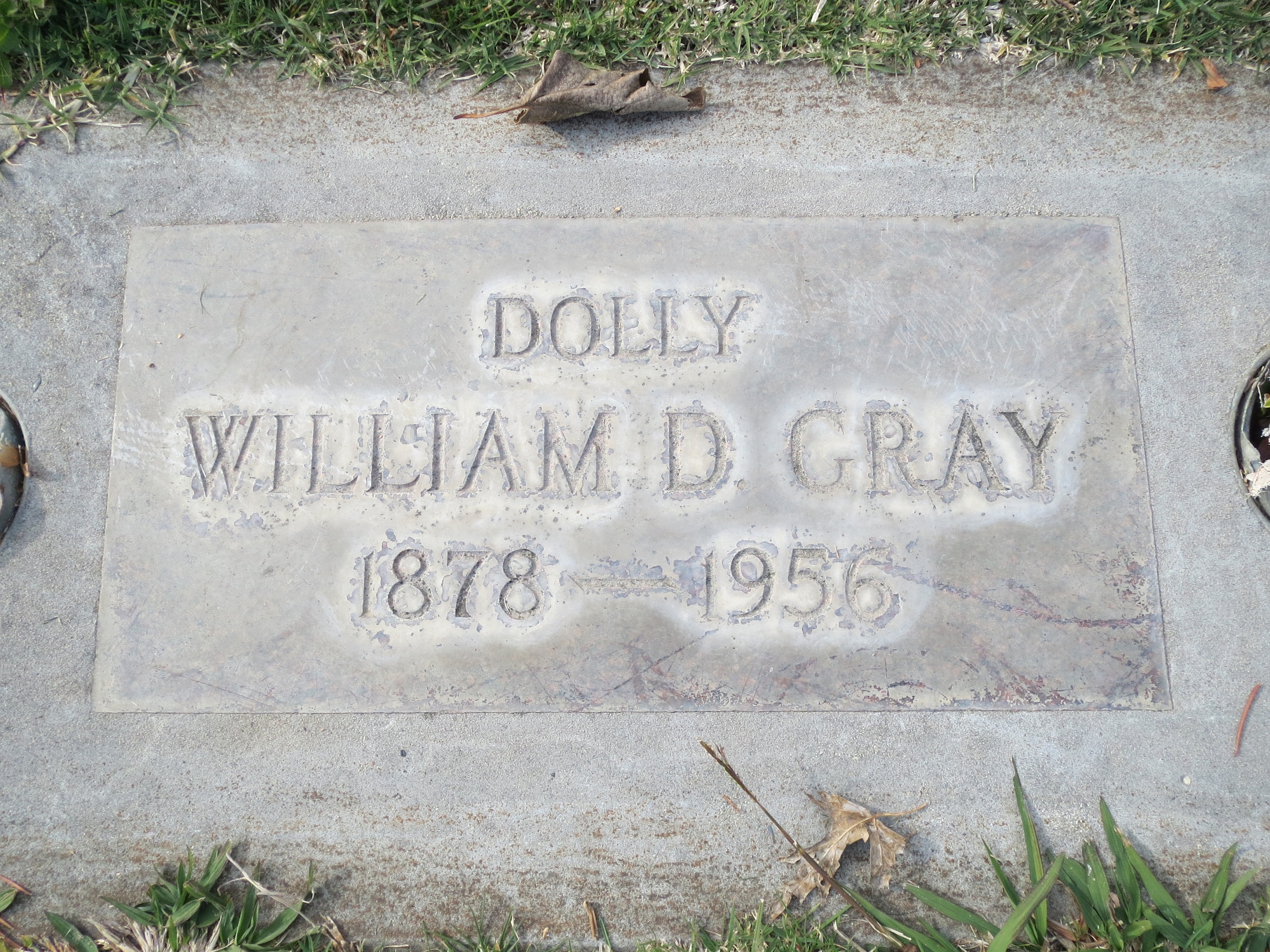Pvt., 3rd class, BN Trench Artillery CAC, US Army, WW I
cause of death: Brain cancer
Left-handed professional baseball pitcher who played from 1909 to 1911 for the Washington Senators. He started his professional baseball career with the Los Angeles Angels of the old California League in 1902. In 1903 the Angels joined to the Pacific Coast League, and in 1903 they had one of the greatest seasons in minor league baseball history. Gray played for the team until 1909, leading the league in winning percentage in 1905 and 1907. Gray made his major league debut with the Washington Senators on April 13, 1909; the start of a major league career that produced some pretty poor pitching stats. He made 36 appearances in his rookie season, starting 26 of those games. Gray gave up Tris Speaker's first big league home run on May 3 of that year. On August 28 of that year, he set the major league record for most walks allowed in an inning, when he walked eight batters in the second inning. He also set the record for most consecutive walks in an inning, when he walked seven batters in a row. In total, Gray allowed 11 walks that game, giving up six runs and earning the loss in the process. Had he had better control, he may very well have won the game he threw a one-hitter. In 1910, Gray was second in the league in losses, fifth in wild pitches, ninth in earned runs allowed and ninth in hit batsmen. On April 12, 1911, Gray threw the very first pitch in Griffith Stadium history. He also won the game that day, one of only two wins for Gray in 1912 overall that season, he went 213 with a 5.06 ERA. His ten wild pitches that season were fourth most in the league, and his ten games finished were eighth most in the league. Gray played in his final major league game on September 29, 1911. Gray went 1551 with a 3.52 ERA in his three-year career with the Senaors. His .227 winning percentage is one of the worst all-time among pitchers with at least 50 career decisions. As a batter, Gray was pretty solid for a pitcher he hit .202 in 218 big league at bats. Following his major league career, Gray pitched in the Pacific Coast league from 1912 to 1913, retiring after the 1913 season. He played for the Vernon Tigers and Oakland Oaks in that time. In 2008, Gray was inducted into the Pacific Coast League Hall of Fame. Gray got his nickname Dolly from the 19th century song Nellie Gray. One line in the song goes darling Nellie Gray, they have taken you away. His teammates mangled and distorted darling and it became "Dolly. Another source says his nickname came from the song Goodbye, Dolly Gray. (submitted by contributor THR)
Pvt., 3rd class, BN Trench Artillery CAC, US Army, WW I
cause of death: Brain cancer
Left-handed professional baseball pitcher who played from 1909 to 1911 for the Washington Senators. He started his professional baseball career with the Los Angeles Angels of the old California League in 1902. In 1903 the Angels joined to the Pacific Coast League, and in 1903 they had one of the greatest seasons in minor league baseball history. Gray played for the team until 1909, leading the league in winning percentage in 1905 and 1907. Gray made his major league debut with the Washington Senators on April 13, 1909; the start of a major league career that produced some pretty poor pitching stats. He made 36 appearances in his rookie season, starting 26 of those games. Gray gave up Tris Speaker's first big league home run on May 3 of that year. On August 28 of that year, he set the major league record for most walks allowed in an inning, when he walked eight batters in the second inning. He also set the record for most consecutive walks in an inning, when he walked seven batters in a row. In total, Gray allowed 11 walks that game, giving up six runs and earning the loss in the process. Had he had better control, he may very well have won the game he threw a one-hitter. In 1910, Gray was second in the league in losses, fifth in wild pitches, ninth in earned runs allowed and ninth in hit batsmen. On April 12, 1911, Gray threw the very first pitch in Griffith Stadium history. He also won the game that day, one of only two wins for Gray in 1912 overall that season, he went 213 with a 5.06 ERA. His ten wild pitches that season were fourth most in the league, and his ten games finished were eighth most in the league. Gray played in his final major league game on September 29, 1911. Gray went 1551 with a 3.52 ERA in his three-year career with the Senaors. His .227 winning percentage is one of the worst all-time among pitchers with at least 50 career decisions. As a batter, Gray was pretty solid for a pitcher he hit .202 in 218 big league at bats. Following his major league career, Gray pitched in the Pacific Coast league from 1912 to 1913, retiring after the 1913 season. He played for the Vernon Tigers and Oakland Oaks in that time. In 2008, Gray was inducted into the Pacific Coast League Hall of Fame. Gray got his nickname Dolly from the 19th century song Nellie Gray. One line in the song goes darling Nellie Gray, they have taken you away. His teammates mangled and distorted darling and it became "Dolly. Another source says his nickname came from the song Goodbye, Dolly Gray. (submitted by contributor THR)
Family Members
Sponsored by Ancestry
Advertisement
Advertisement










